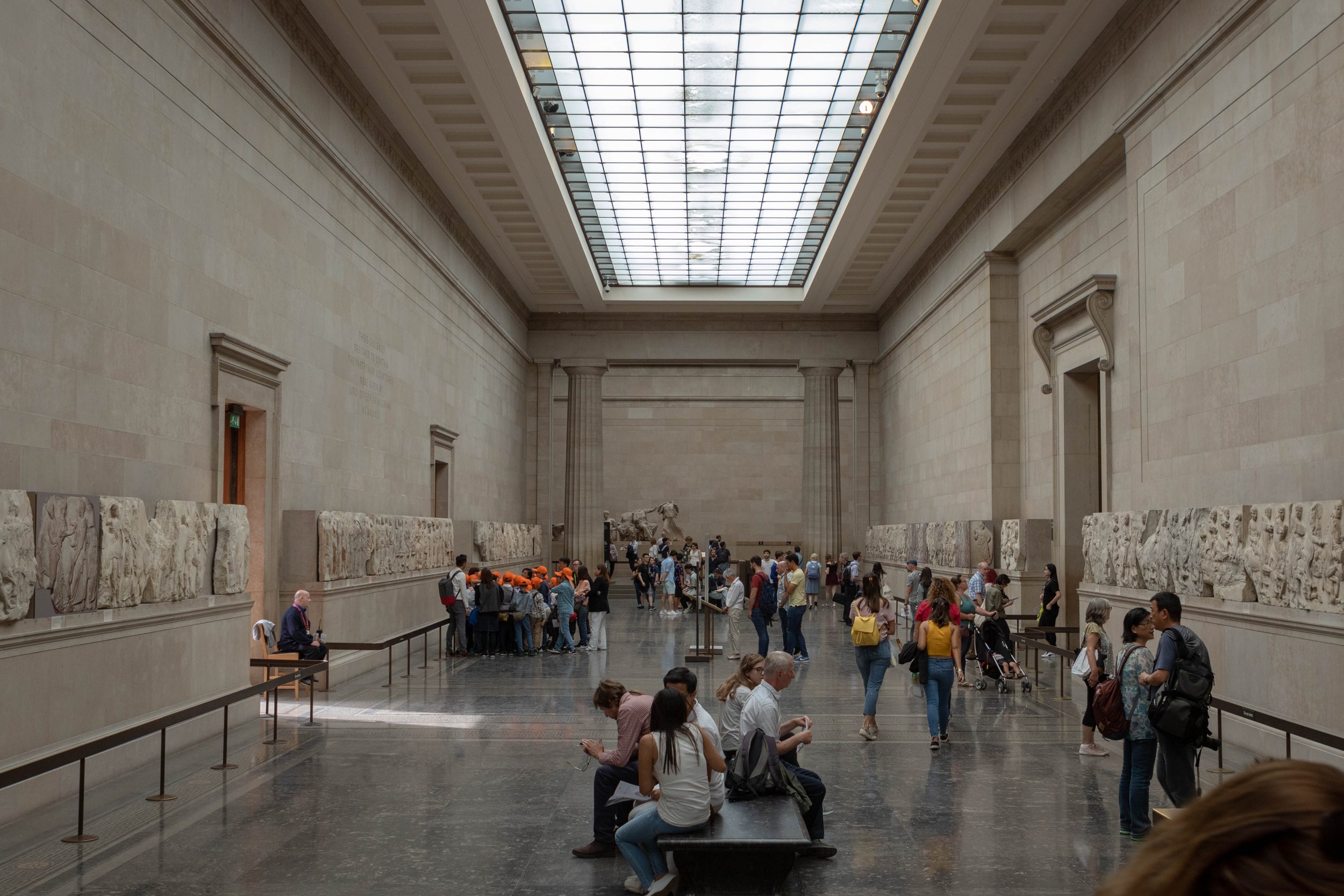Do Antiquities Have a Future?
20 January 2022
Is there a future market for antiquities, or does the potential for restitution and origin disputes spell trouble for collectors?
Daisy Dunn
Daisy Dunn is a classicist and biographer and the author of Homer: A Ladybird Expert Book for adults and children.
The Parthenon Marbles in the British Museum.
Brian Jeffery Beggerly from Singapore, CC BY 2.0, via Wikimedia Commons.
In October last year, a private collector in France agreed to return an ancient carving featuring a bird headdress to Guatemala after it was discovered to have been looted from a Mayan site there in the 1960s. The piece had been due to be auctioned in Paris in 2019 with a valuation approaching £30,000 when the alarm was raised over its origins. Suspended from the sale, and investigated further, it was handed back to Guatemala last October in a ceremony presided over by UNESCO.
Repatriation of objects is a hot topic. The ongoing debate over the Parthenon Marbles and their continuing presence in the British Museum highlights just some of the issues impinging upon the future of antiquities. Last November the Prime Minister of Greece offered a new proposal to secure their return. The argument for the reunification of the sculptures has certainly been gaining momentum in recent years. While other countries issue calls for the return of their artefacts, too, owners and potential buyers of antiquities in the art market may well be wondering which way to turn.
Roman statue of Asclepius, c.100-150 AD, marble, H: 68cm.
Image courtesy of Charles Ede Ltd.
Is there a future market for antiquities, or does the potential for restitution and origin disputes spell trouble for collectors? As often, the answer lies in the nature of one’s purchase and the research conducted behind it. Provenance, always important, acquires a special significance where antiquities are concerned. Collectors have long displayed interest in pieces that can be shown to have been passed down the same family in an unbroken chain for generations, if not for centuries. But with some of the finest antiquities on sale originating in Greece, Rome, Egypt and the Middle East, it is essential to know that the correct checks have been made to protect against unlawful and unethical importation.
Dealers will often refer to UNESCO’s 1970 Convention on the Means of Prohibiting and Preventing the Illicit Import, Export and Transfer of Ownership of Cultural Property. Under the terms of ‘UNESCO 70’, as it’s often called for short, efforts are made to prevent the trafficking of antiquities through the creation of export certificates, inventories and other measures, and objects found to have been stolen from museums and similar may be seized and returned to their countries of origin. Problems however arise when artefacts have been excavated, for example, and exported prior to the introduction of the convention. The legislation cannot be applied retrospectively.
Something that dealers can and should do as part of due diligence is to check that their objects do not appear in the Art Loss Register or Art Recovery International databases of stolen and looted goods. Speaking of dealers, the LAPADA online ‘Guide to Buying Antiquities’ names the following as associations who provide lists of bona fide ones: Antiquities Dealers Association, LAPADA, International Association of Dealers of Ancient Art, Association of International Antiquities Dealers and the Confédération Internationale des Négociants en Oeuvres d’Art. Documentation absolutely must be sought where objects originate in conflict zones to confirm that their removal predates the conflict. Specific regulations are in place for the movement of objects from Syria and Iraq.
Greek black-figure eye amphora, Athens, c.530-520 BC, manner of the Antimenes Painter, terracotta, H: 42.2cm.
Image courtesy of Charles Ede Ltd.
Especially contentious within this arena is the question of what to do with objects that can no longer be sold because they breach the requirements outlined above. Should efforts be made to repatriate them? What if that is no longer possible? Could a special place be assigned to these pieces detailing their origins and the problems surrounding their export? Where and what form would that take? There will be plenty of cases in which repatriation is the most desirable course. Working out the logistics, financial and otherwise, to ensure the protection of the object could well be challenging.
That there are risks with such purchases is undeniable. On the flip side, provided every care has been taken, there is good reason to embrace the opportunity to provide a safe home for objects of rare age and rarity. To possess a small piece of Roman history, say, is to forge an unparalleled connection with an owner and maker from the distant past. It is to help preserve heritage. Certainly, as a classicist, I recognise the value in becoming the guardian of even a very simple cup or bead necklace that I can keep and protect against damage and loss.
In a world where so much of our lives is archived online, and where even history is often digested through webpages and digital encyclopaedias, antiquities offer a peculiarly tangible path into the past. There is a good reason that school children are often treated to object-handling at museums. The texture of a headpiece or the thickness of a glass can say a lot about everyday life in an ancient culture. There is nothing quite like touching something to feel the connection. It is, indeed, sometimes only by holding the weight of the past in our hands that we can truly appreciate the importance of preserving a material culture.













